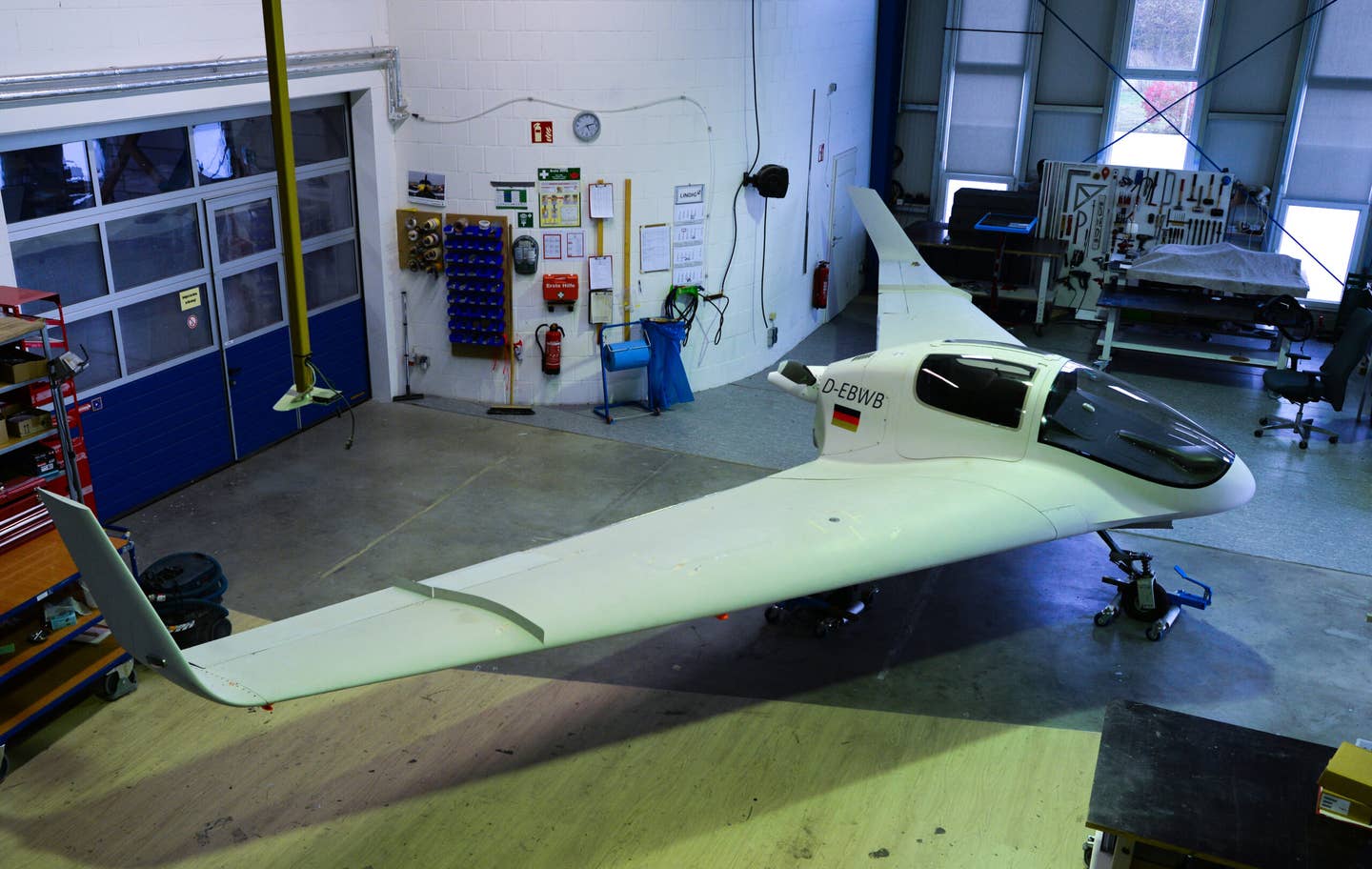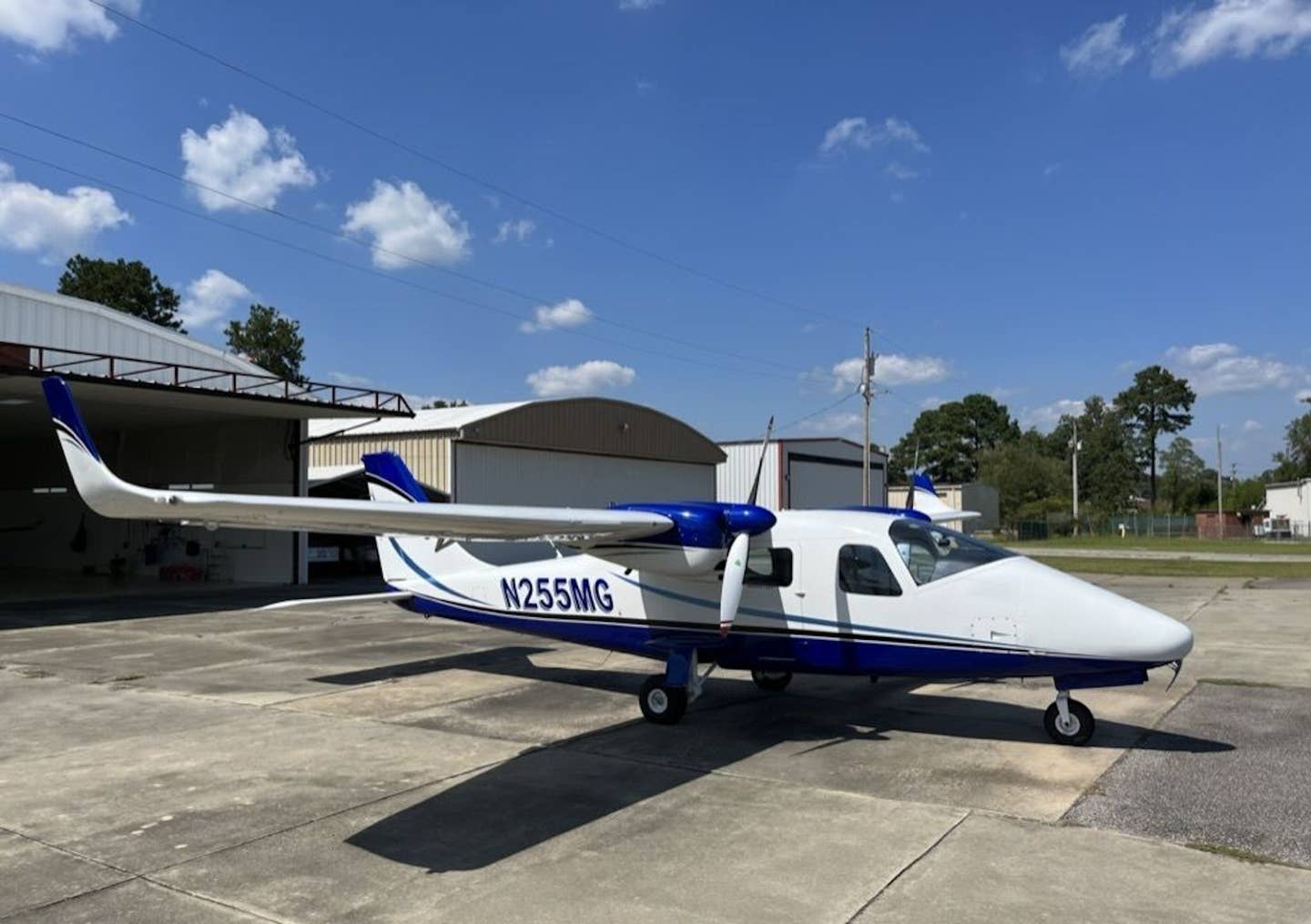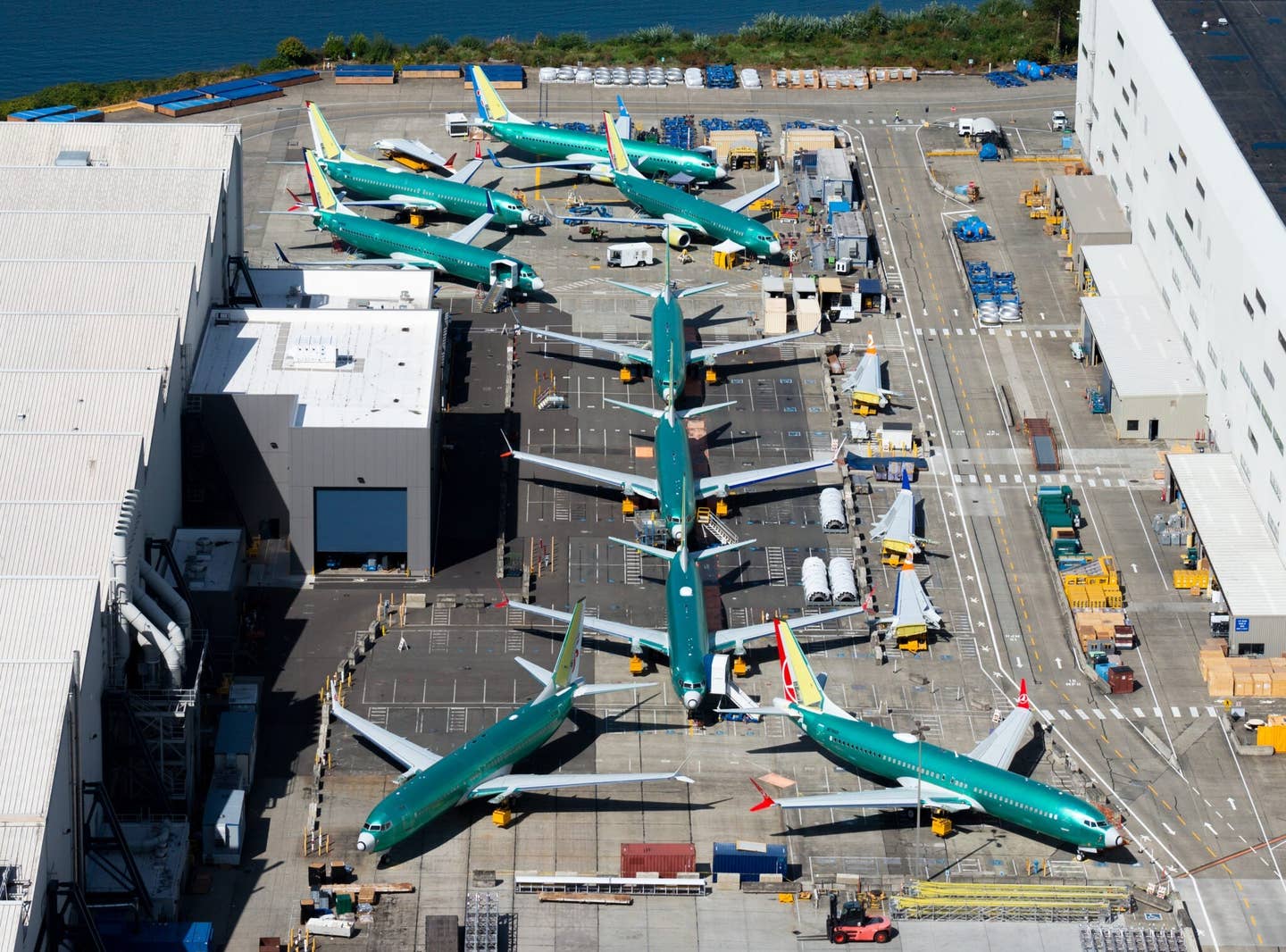The Untapped Potential of the Horten HX-2
The flying wing was most recently marketed as an ideal platform for unmanned operations with a potential range of 2,175 miles or an endurance of 20 hours.

The sole Horten HX-2 awaits its next test flight in October 2019. [Courtesy: Jason McDowell]
Cool as they are, flying wings are exceedingly rare.
Among the two dozen or so individual models that have been built over the years, only a few types have been produced in quantities of more than two or three. Fewer still were both manned and powered, and the small Horten HX-2 is a member of that exclusive group.
There are several reasons for the rarity of flying wings. Airliner versions never caught on due to their size and overall footprint—a flying wing capable of carrying 50-plus passengers would generally be too large to utilize traditional taxiways, ramps, and ground infrastructure. Most passengers in the voluminous structure would be seated far away from the extremely limited number of windows. Additionally, effectively evacuating a large number of passengers from such an airframe presents several daunting challenges.
This leaves only a few categories in which flying wings make sense. They’ve succeeded in a number of military applications, as their unique advantages of internal volume, aerodynamic and structural efficiency, and stealth benefits outweigh the negatives. They’ve had some limited success in the glider and UAV categories. And while they haven’t caught on in other applications, they have potential in applications requiring smaller airframes and fewer seats, such as business and private aviation.
For a modern prototype, the HX-2 has a unique and deep lineage. Like aircraft manufacturer Flight Design, Horten is a subsidiary of Lift Air, itself part of the large Lindig Group based in Germany. But unlike most other upstarts in aviation, Horten has direct ties to early aviation pioneers—specifically, Reimar Horten. A designer of several flying wings, including the jet-powered Ho-229 fighter/bomber, Reimar contributed to the design of the HX-2’s predecessors in the late 1980s and early ’90s.
With a 32-foot span, a 100 hp Rotax 912iS, and a fuel capacity of 63 gallons, the two-seat HX-2 is a far cry from World War II-era bombers. Indeed, the basic stats place it in a category consisting of modern LSAs and legacy two-seaters like the Grumman AA-1 and Cessna 150. But the unique, flying wing configuration offers some similarly unique advantages in a private GA application.
Efficiency is perhaps the most compelling attribute of the HX-2. Initial testing demonstrated a cruising speed of 87 mph while burning less than 2.65 gph. This equates to an impressive 32.8 mpg.
The design has other inherent benefits. Although internal volume is plentiful and could easily be utilized for cargo and baggage, there would be very little center of gravity (CG) variance. Accordingly, the HX-2 would be difficult or even impossible to load outside of the CG limits. The flat profile has also reportedly demonstrated excellent handling qualities during crosswind takeoffs and landings.
When Horten actively marketed the HX-2 prior to 2020, the company presented it as the initial version of a family of aircraft. Horten planned a kit version, buildable by individuals or in concert with the manufacturing facility, as some manufacturers do today. From there, the company envisioned a four-place version optimized for short-range air taxi operations.
A more distant goal was a hydrogen-powered version. The voluminous design of the HX-2 was particularly suited to this, as large-volume hydrogen storage has always been a significant hurdle for more traditional aircraft designs. According to Horten, the aircraft would have been able to achieve a 1,000 nm range with hydrogen power.
One of the company’s most recent efforts was to position the HX-2 as an ideal platform for unmanned operations. With relatively few modifications, it could provide a range of 2,175 miles or an endurance of 20 hours. Although Horten never actively marketed the HX-2 as a manned military aircraft, it observed that the two-seater has sufficient internal space for the installation of a toilet and a bed.
- READ MORE: Horten HX-2 Takes Flight in Germany
When we visited Horten’s facilities adjacent to Lift Air near Eisenach, Germany, in 2019, and studied the HX-2 in person, the construction appeared to be first rate without sloppy details inherent in some prototype and proof-of-concept aircraft. The two-seat cockpit was indeed spacious, with comfortable seating.
While visibility was decent in most directions, downward visibility was effectively zero, a natural side effect of sitting within the wing. Cockpit access was impossible without a ladder, and one wonders how Horten might have developed stowable, built-in steps to address this.
Unfortunately, while the Horten website is still live and touts the HX-2, development and marketing efforts appear to have stalled since 2020. But the presence of the website nevertheless offers hope that with another round of investment, the program could pick right back up from where it left off.
With any luck, the convergence of funding and market conditions will breathe new life into the HX-2 so that it may take flight once again.

Subscribe to Our Newsletter
Get the latest FLYING stories delivered directly to your inbox






